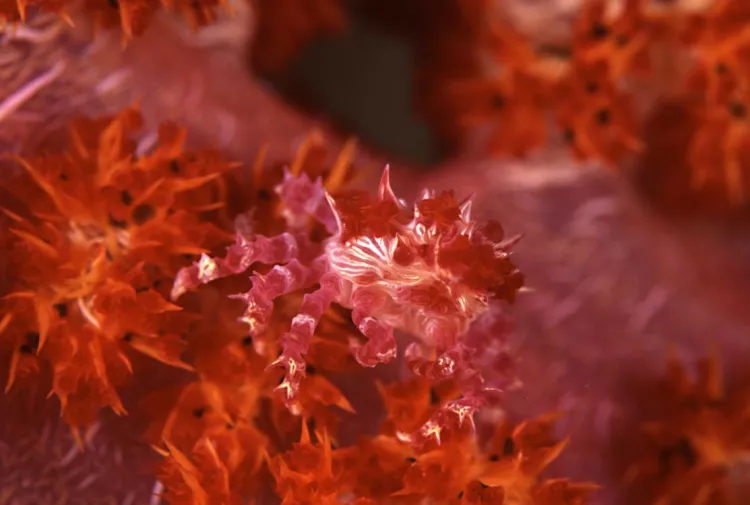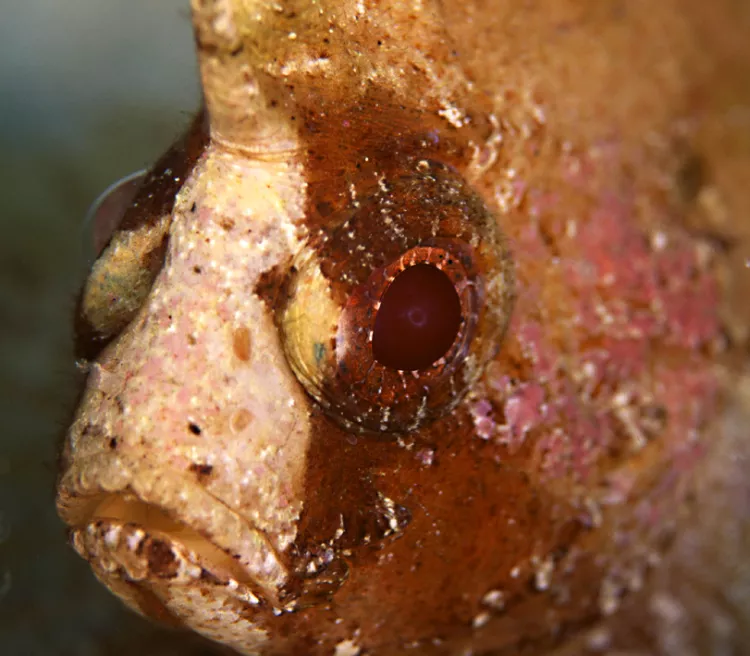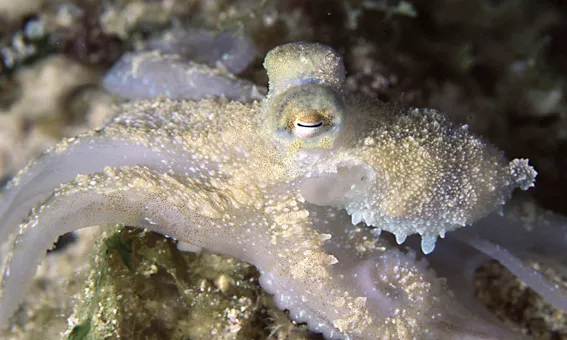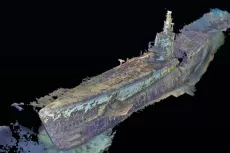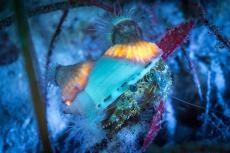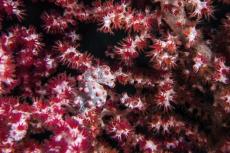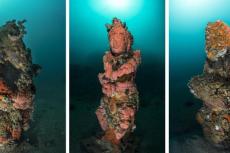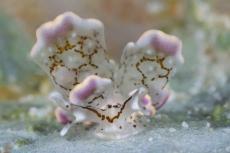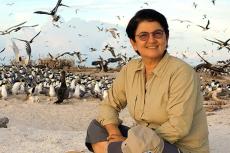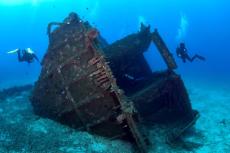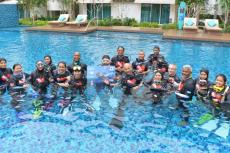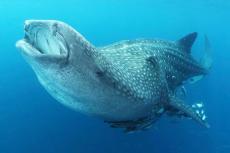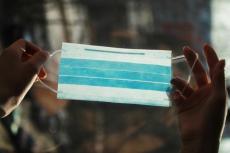After a two-hour car ride and an hour boat travel, I finally reached my destination—Cabilao, an island paradise located near Cebu, Philippines.Before coming here, I had read exciting accounts about Cabilao Island, particularly about the stargazers and pygmy seahorses that reside in its surrounding waters. On this trip, I was determined to see these critters, at the same time discover other things that Cabilao had to offer.
Contributed by
After a two-hour car ride and an hour boat travel, I finally reached my destination—Cabilao, an island paradise located near Cebu, Philippines. Before coming here, I had read exciting accounts about Cabilao Island, particularly about the stargazers and pygmy seahorses that reside in its surrounding waters. On this trip, I was determined to see these critters, at the same time discover other things that Cabilao had to offer.
The white-sand beaches and crystal blue waters immediately captivated me. As I went to shore, my gracious host Babie gave a pleasant welcome of her vacation haven called La Estrella dive resort. The ambience scene was very tranquil. Apart from the intermittent courting sounds of the birds, I could hear only the rhythms of the sea and wind.
Located a few steps from shore was the native-inspired restaurant where I had an ice-cold drink offered to me by the staff. Later, I was guided to a nipa hut that would be my home for the next four days. In front of the hut was a hammock tied between two coconut trees. It was very inviting.
After settling in, I decided to comb the beach. At a distance, I could see the scuba diving facility earlier pointed to me by Babie. I headed towards its direction. Upon reaching the place, I was met by the Sea Explorers dive personnel with whom I had a chance to plan my diving itinerary for the subsequent days. I would be provided with a dedicated dive guide so I could have a lot of flexibility and time to take photographs. My expectations were high.
Diving adventure
The following morning, I was at the dive facility early. In no time, I was geared up and ready for the dive. Together with an expert guide, we took a shore entry into calm and clear waters. Less than ten minutes into the dive, I discovered a long-snout pipefish hidden among the seagrass. With a length of about a foot, I could easily have mistaken it for a dead tree branch. Apparently confident of its camouflage, it was unmindful of my presence as I took a few photographs. A few minutes later, my guide pointed a porcelain crab to me. I clicked the shutter several times and then continued to trail my escort.
Upon reaching 80 feet, I noticed a magnificent red sea fan stretching out to the open sea. Upon closer inspection, I detected a red spider crab slowly moving across its branches. The crustacean had overly long and thin legs; it looked like a spider. After taking several shots, I realized that this dive was becoming photographically intense.
Subsequently, my guide led me towards an adjacent sea fan. He aimed his finger to a pair of red pygmy seahorses. One was a third of an inch in size, while the other was even smaller! They easily blended with the colour and texture of the tiny coral branches; their camouflage was perfect I had to keep my eyes glued on them in order not to lose them from my sight.
At one time, I made the mistake of glancing at my camera controls and consequently lost sight of the pair. I spent several minutes searching the same coral while the seahorses remained motionless. Completely delighted at finding them again, I took their images until my film was almost exhausted. It was time to head back to shore.
On my return journey, the sight of a two-inch Pegasus sea moth darting across the sand caught me attention. It had a long snout and a scaly body but looked nonetheless beautiful. Just as I had used my last film exposure, another sea moth emerged into the scene. This new sea moth was larger and had an alluring mint green body colour. Too bad, I did not have any film left in the camera. Nonetheless, I was determined to go back later in the evening. In the meantime, the hammock in front of my hut was waiting for me. As a result, I spent the rest of the day in dreamland (sleeping).
Night diving
By nightfall, I was well-rested and ready for another dive. Armed with a flashlight, I was soon underwater. Crabs, prawns, eels stalked the reef for food. Particularly interesting was a stargazer that laid motionless underneath the sand waiting for unsuspecting prey. As I took a mug shot of this monster in disguise, another stargazer suddenly jumped out of the sand beside me. Curiously, it exposed itself for a few seconds before digging back into the sand. Other critters showed up as well, such as the brown leaf fish that posed while I took a portrait photograph. After a few minutes, an octopus appeared.
This nocturnal predator was oblivious to my presence as it prowled the reef while using its tentacles to poke inside rock crevices in search of prey. I followed the octopus for several minutes until I spotted a soft red coral. Upon closer inspection, I discovered a thorny little crab crawling across the stems. Its red and white colouration and spiny body mimicked its soft coral host. Unless it had moved, I would not have noticed it.
As I explored the reef, I realized that the underwater night scene was full of life. I was already awed by a large amount of activity in the reef. Again, I ended the dive with great anticipation that the succeeding days will be as enchanting. I was not disappointed.
For three more days, I savoured the sights underneath the waters of Cabilao – beyond doubt, a paradise for critter shutterbugs. Cabilao is best dived and experienced with the warmth and hospitality of La Estrella Resort (www.laestrella.ph) and Sea Explorers Philippines(www.sea-explorers.com).
For additional information about diving the Philippine islands check out the Philippines Department of Tourism website (www.wowphilippines.com.ph). ■
Published in
-
X-Ray Mag #5
- Read more about X-Ray Mag #5
- Log in to post comments



